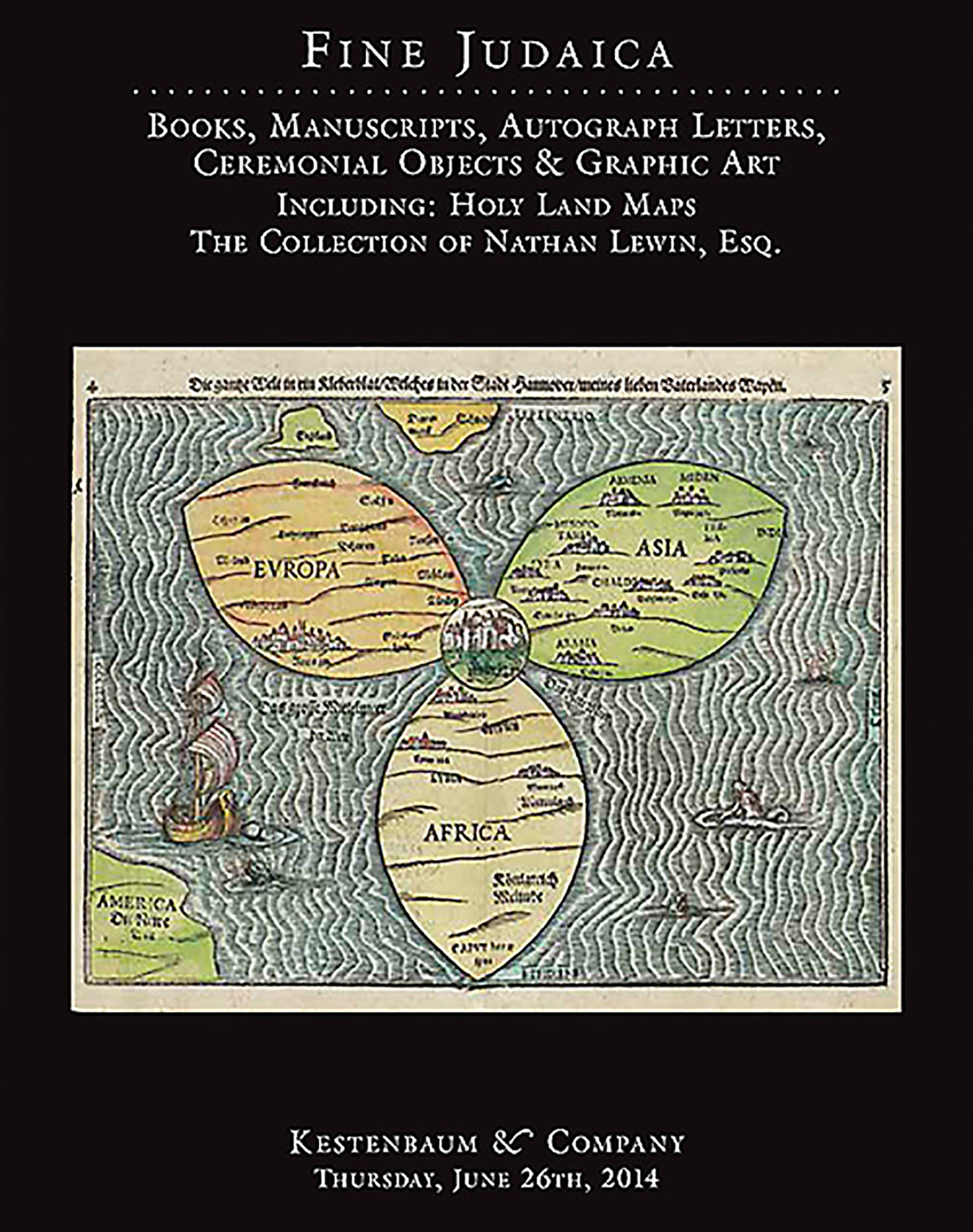Hame’assef. Volumes I-X (of 11, all published). Including the rare Prospectus volume: Nacḥal HaBesór. Text in Hebrew and (to a far lesser extent) German. Edited by Isaac Euchal, et al.

AUCTION 62 |
Thursday, June 26th,
2014 at 1:00
Fine Judaica: Books, Manuscripts, Autograph Letters, Graphic and Ceremonial Art
Lot 103
(HASKALAH).
Hame’assef. Volumes I-X (of 11, all published). Including the rare Prospectus volume: Nacḥal HaBesór. Text in Hebrew and (to a far lesser extent) German. Edited by Isaac Euchal, et al.
Koenigsberg / Berlin / Dessau, etc: 1783-1811
Est: $15,000 - $18,000
PRICE REALIZED $15,000
<<THE FIRST CONTINUOUS HEBREW PERIODICAL AND THE FIRST HEBREW ORGAN OF THE HASKALAH MOVEMENT.>>
“Founded in 1783 in Koenigsberg by pupils of Moses Mendelssohn, Hame’assef was devoted to the education of youth, the increased use of the Hebrew language, and raising the general cultural level of the people. Although the organ was planned as a monthly, it actually appeared as a quarterly whose numbers were collected into annual volumes. The first three volumes were published in Koenigsberg from 1783-86; the next three in Berlin, 1788–90; four issues of the seventh volume in Breslau, 1794–97; and three volumes of the renewed Hame’assef in Berlin, Altona, and Dessau (1809–11), after which it ceased publication.
The editors in Koenigsberg were Isaac Euchel (who also participated during the first period in Berlin) and Mendel Bresslau; in Berlin and Breslau they were Aaron Wolfsohn-Halle and Joel Loewe (Brill). The renewed Hame’assef was edited by the poet, Shalom Cohen.
Many of the articles published in Hame’assef were unsigned. Moses Mendelssohn’s occasional contributions, for instance, do not bear his name. However, Naphtali Herz Wessely, who was adviser to the organ, was an exception to this practice and signed his many poems and articles. In addition to Haskalah writers, a number of moderate rabbis also contributed. The radicalism of editor Wolfsohn-Halle not only led religious Jews to shun Hame’assef, but also caused Wessely to cease writing for it. Hame’assef’s moderate Haskalah policy, which avoided breaking with tradition, was restored only when publication was renewed under Cohen.
In the spirit of Haskalah, Hame’assef’s literary section published poems in praise of wisdom and nature, in denigration of obscurantism and idleness, festive poems, ethical parables, and hymns of praise to notable persons and kings. It also published linguistic articles, biblical exegesis, historical studies, biographies of famous Jews, reviews, news relevant to the Jewish world, translations of works from world literature and supplements in German, which were occasionally printed in Hebrew letters.
In its support of Hebrew, Hame’assef sometimes criticized East European Jews for their almost universal reliance on Yiddish. In its advocacy of pure language, the periodical sought to remain faithful to the language and metaphorical style of the Bible. Yet, despite this, it quoted rabbinical sayings and Aramaic expressions. Although its reportage of news and its educational articles were of immediate practical value, Hame’assef was mainly literary in character and somewhat detached from the concerns of daily life. The periodical hoped, perhaps naively, to prepare Jews for emancipation. Nevertheless, there occasionally appeared writings of a Jewish nationalist nature, such as Judah Halevi’s Ẓiyyon HaLo Tishali issued in the 1789 volume, and the yearnings for Zion expressed in a number of the poems published in the renewed Hame’assef.
Hame’assef became the symbol of the Haskalah movement, and Haskalah writers were called the “generation of Me’assefim.” Maskilim of this time long lamented its demise and for many years the Bikkurei ha-Ittim (1821–32) of Vienna reprinted “the best of Hame’assef.” Even beyond the borders of Germany, Hame’assef’s content and form were, for generations, the prototype for Haskalah organs.” (Jewish Virtual Library).
